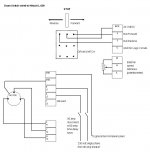abarth4
Plastic
- Joined
- Nov 29, 2007
- Location
- Peoria Illinois
Howdy. I'm new to this forum so excuse me if this has been posted before but a quick search did not turn anything up. I'm in the market for a rotary phase converter to power a Bridgeport Mill I have recently acquired. (1 hp). Could I take time and build one to save a few bucks? Probably. Do I have the time to do this? No. Essentially I'm looking to trade time for money so I can move on with other projects in the pipeline. A quick web search brought up a number of manufacturers (TEMCo, Phase-A-Matic, American Rotary, Des-co Industries, etc.) so my question is, does anyone have experience with any of these and if so, who builds the best one? Where's the best value for money? In life, you always pay for what you get, sometimes you get what you pay for!  Thanks
Thanks
 Thanks
Thanks


